ВУЗ: Казахская Национальная Академия Искусств им. Т. Жургенова
Категория: Книга
Дисциплина: Не указана
Добавлен: 03.02.2019
Просмотров: 21646
Скачиваний: 19
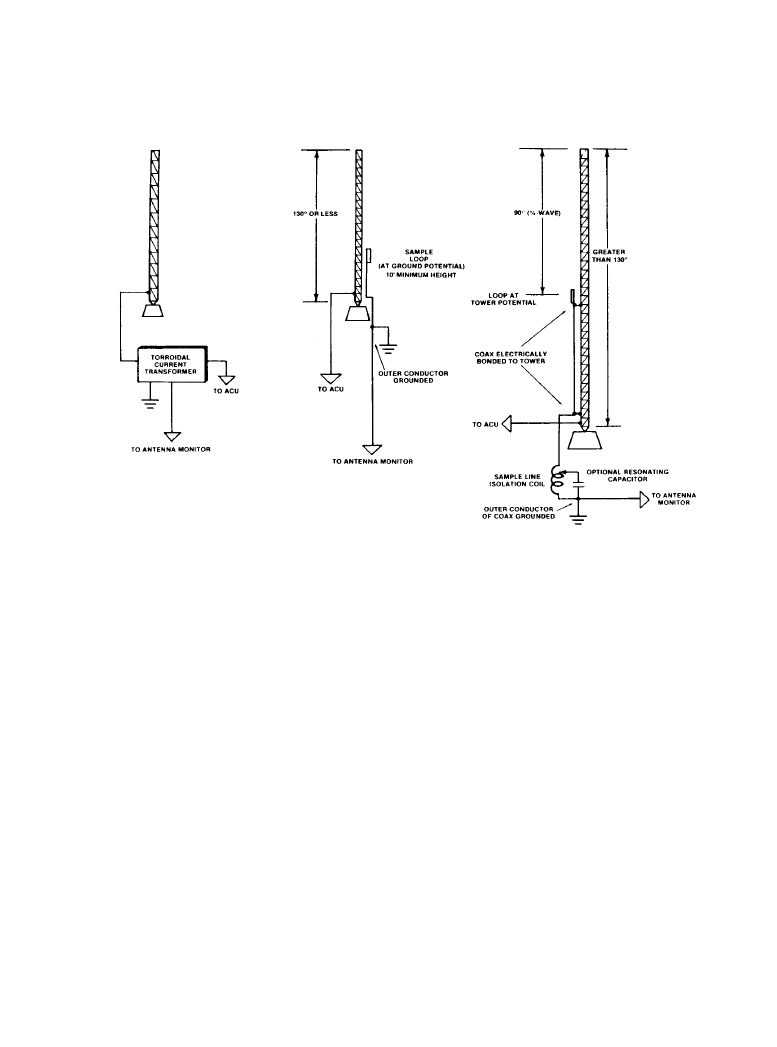
11-122 Broadcast Transmission Systems
Where:
P = power in W
I = the common point current in A
R = the common point resistance in
Ω
Monitor Points
Routine monitoring of a directional antenna involves the measurement of field intensity at cer-
tain locations away from the antenna, called monitor points. These points are selected and estab-
lished during the initial tune-up of the antenna system. Measurements at the monitor points
should confirm that radiation in prescribed directions does not exceed a value that would cause
interference to other stations operating on the same or adjacent frequencies. The field intensity
limits at these points are normally specified in the station license. Measurements at the monitor
points may be required on a weekly or a monthly basis, depending on several factors and condi-
tions relating to the particular station. If the system is not a critical array, quarterly measurements
may be sufficient.
P
I
2
R
=
Figure 11.5.19
Three possible circuit configurations for phase sample pickup.
Downloaded from Digital Engineering Library @ McGraw-Hill (www.digitalengineeringlibrary.com)
Copyright © 2004 The McGraw-Hill Companies. All rights reserved.
Any use is subject to the Terms of Use as given at the website.
Transmitting Antennas
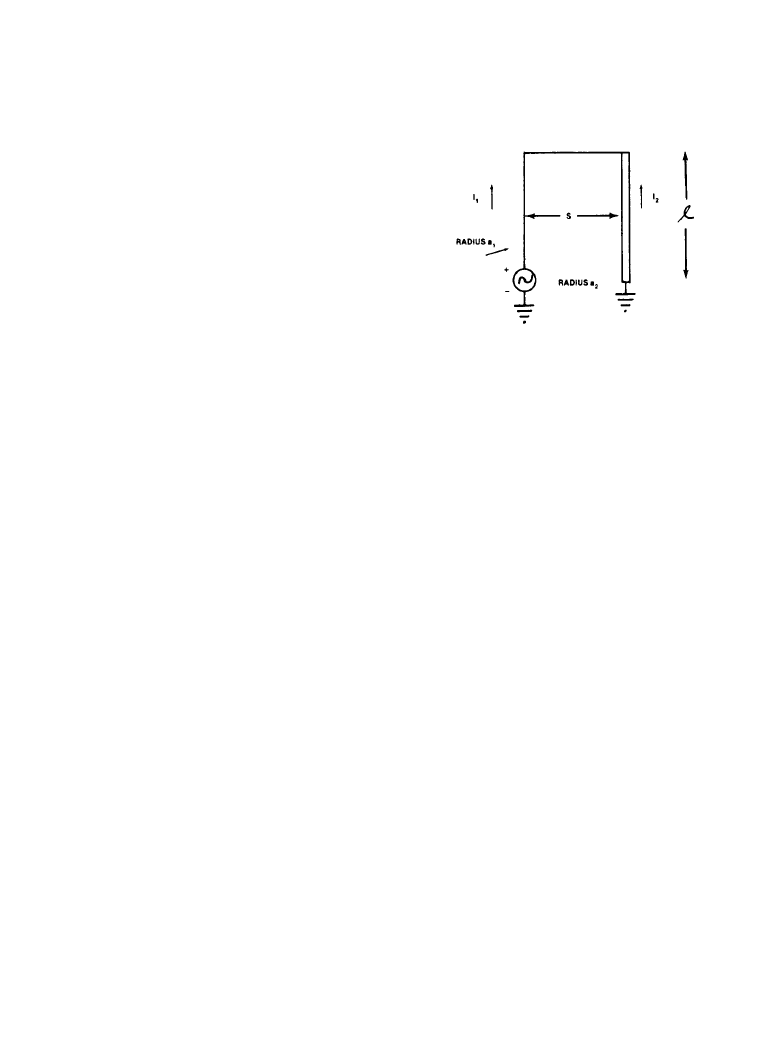
Transmitting Antennas 11-123
11.5.4c
Folded Unipole Antenna
The folded unipole antenna consists of a grounded vertical structure with one or more conductors
folded back parallel to the side of the structure. It can be visualized as a half-wave folded dipole
perpendicular to the ground and cut in half (see Figure11.5.21). This design makes it possible to
provide a wide range of resonant radiation resistances by varying the ratio of the diameter of the
folded-back conductors in relation to the tower. Top loading can also be used to broaden the
antenna bandwidth. A side view of the folded unipole is shown in Figure 11.5.22.
The folded unipole antenna could be considered a modification of the standard shunt-fed sys-
tem. Instead of a slant wire that leaves the tower at an approximate 45° angle (as used for shunt-
fed systems), the folded unipole antenna has one or more wires attached to the tower at a prede-
termined height. The wires are supported by standoff insulators and run parallel to the sides of
the tower down to the base.
The tower is grounded at the base. The folds, or wires, are joined together at the base and
driven through an impedance matching network. Depending upon the tuning requirements of the
folded unipole, the wires may be connected to the tower at the top and/or at predetermined levels
along the tower with shorting stubs.
The folded unipole can be used on tall (130° or greater) towers. However, if the unipole is not
divided into two parts, the overall efficiency (unattenuated field intensity) will be considerably
lower than the normally expected field for the electrical height of the tower.
11.5.5 FM Broadcast Antenna Systems
The propagation characteristics of VHF FM radio are much different than for MF AM. There is
essentially no difference between day and night FM propagation. FM stations have relatively uni-
form day and night service areas with the same operating power.
A wide variety of antennas is available for use in the FM broadcast band. Nearly all employ
circular polarization. Although antenna designs differ from one manufacturer to another, gener-
alizations can be made that apply to most units.
Figure 11.5.20
The folded unipole antenna can be
thought of as a 1/2-wave folded dipole antenna per-
pendicular to the ground and cut in half.
Downloaded from Digital Engineering Library @ McGraw-Hill (www.digitalengineeringlibrary.com)
Copyright © 2004 The McGraw-Hill Companies. All rights reserved.
Any use is subject to the Terms of Use as given at the website.
Transmitting Antennas
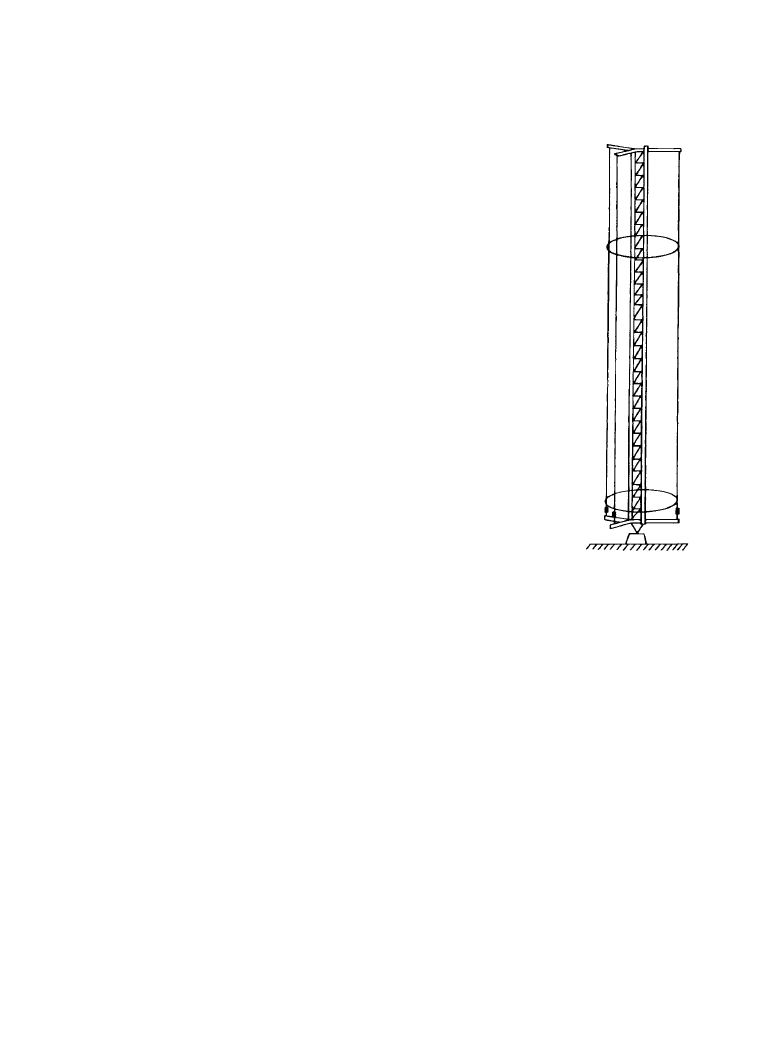
11-124 Broadcast Transmission Systems
11.5.5a
Antenna Types
There are three basic classes of FM broadcast transmitting antennas in use today: ring stub and
twisted ring, shunt- and series-fed slanted dipole, and multi-arm short helix. While each design
is unique, all have the following items in common:
•
The antennas are designed for side mounting to a steel tower or pole.
•
Radiating elements are shunted across a common rigid coaxial transmission line.
•
Elements are placed along the rigid line every one wavelength.
•
Antennas with one to seven bays are fed from the bottom of the coaxial transmission line.
•
Antennas with more than seven bays are fed from the center of the array to provide more pre-
dictable performance in the field.
Antennas generally include a means of tuning out reactances after the antenna has been installed
through the adjustment of variable capacitive or inductive elements at the feed point.
Figure 11.5.23 shows a shunt-fed slanted dipole antenna that consists of two half-wave
dipoles offset 90°. The two sets of dipoles are rotated 22.5° (from their normal plane) and are
delta-matched to provide a 50
Ω impedance at the radiator input flange. The lengths of all four
dipole arms can be matched to resonance by mechanical adjustment of the end fittings. Shunt-
feeding (when properly adjusted) provides equal currents in all four arms.
Figure 11.5.21
The folds of the unipole antenna are arranged either near
the legs of the tower or near the faces of the tower.
Downloaded from Digital Engineering Library @ McGraw-Hill (www.digitalengineeringlibrary.com)
Copyright © 2004 The McGraw-Hill Companies. All rights reserved.
Any use is subject to the Terms of Use as given at the website.
Transmitting Antennas
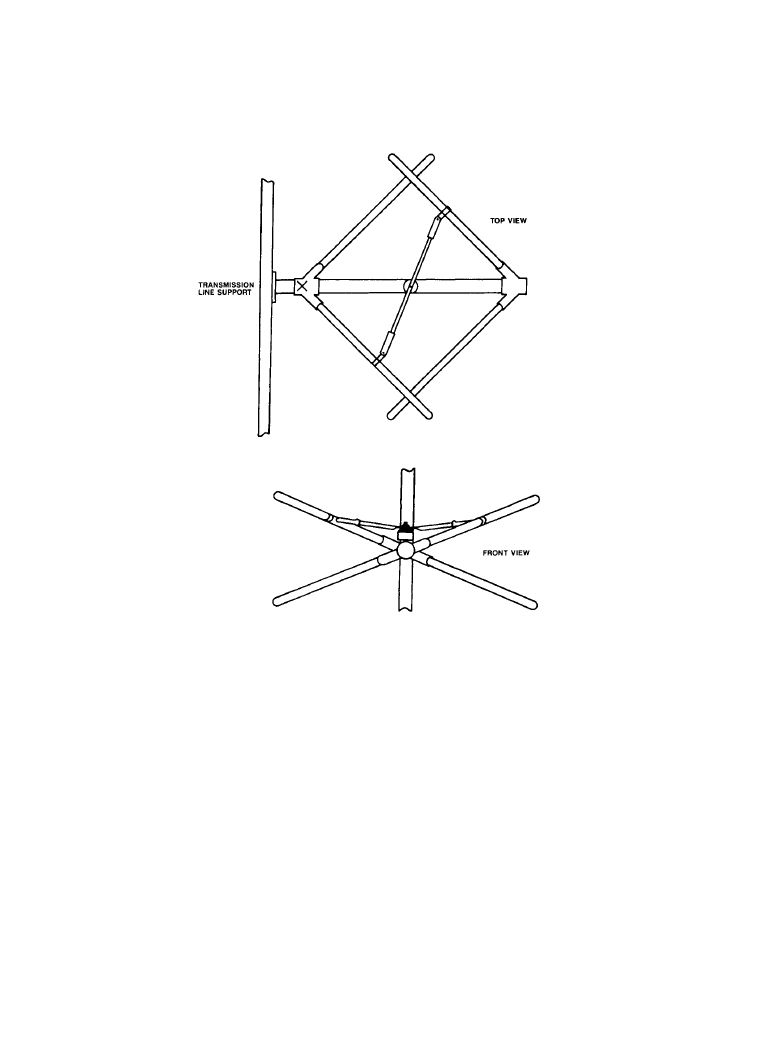
Transmitting Antennas 11-125
Wideband panel antennas are a fourth common type of antenna used for FM broadcasting.
Panel designs share some of the characteristics listed previously, but are intended primarily for
specialized installations in which two or more stations will use the antenna simultaneously. Panel
antennas are larger and more complex than other FM antennas, but offer the possibility for
shared tower space among several stations and custom coverage patterns that would be difficult
or even impossible with more common designs.
The ideal combination of antenna gain and transmitter power for a particular installation
involves the analysis of a number of parameters. As shown in Table 11.5.2, a variety of pairings
can be made to achieve the same ERP.
(
a)
(
b)
Figure 11.5.22
Mechanical configuration of one bay of a circularly-polarized FM transmitting
antenna: (
a) top view of the antenna, (b) front view.
Downloaded from Digital Engineering Library @ McGraw-Hill (www.digitalengineeringlibrary.com)
Copyright © 2004 The McGraw-Hill Companies. All rights reserved.
Any use is subject to the Terms of Use as given at the website.
Transmitting Antennas
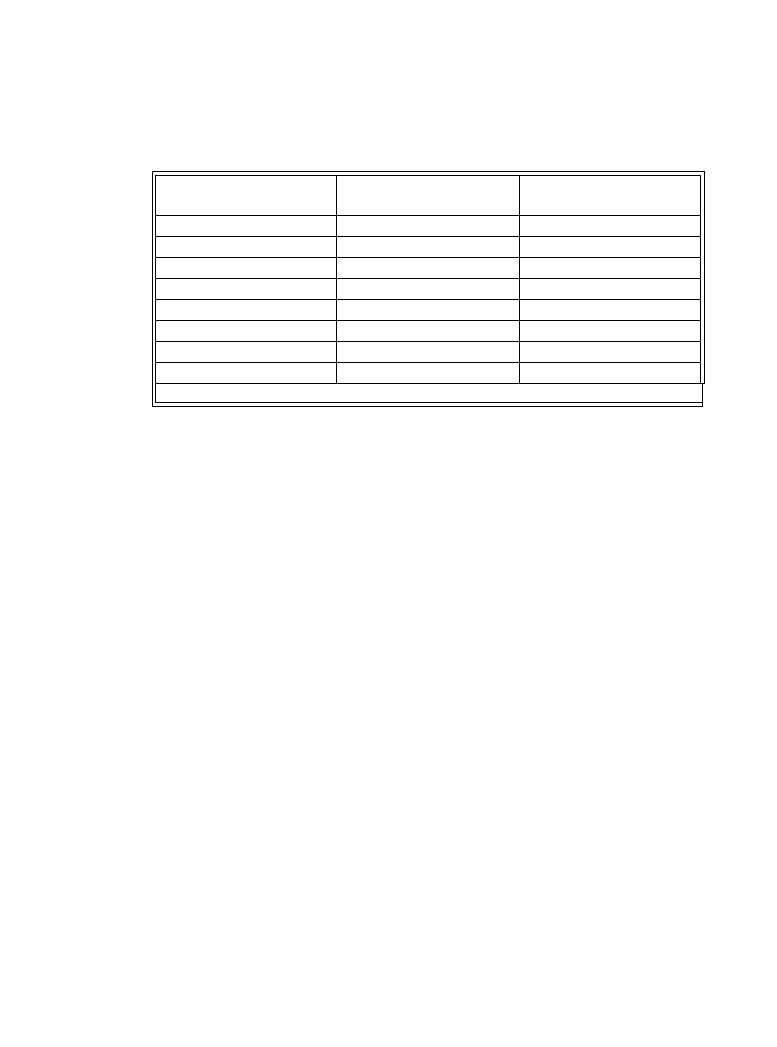
11-126 Broadcast Transmission Systems
11.5.6 Bibliography
Benson, B., and Whitaker, J.: Television and Audio Handbook for Technicians and Engineers,
McGraw-Hill, New York, N.Y., 1989.
Bingeman, Grant: “AM Tower Impedance Matching,” Broadcast Engineering, Intertec Publish-
ing, Overland Park, Kan., July 1985.
Bixby, Jeffrey: “AM DAs—Doing it Right,” Broadcast Engineering, Intertec Publishing, Over-
land Park, Kan., February 1984.
Chick, Elton B.: “Monitoring Directional Antennas,” Broadcast Engineering, Intertec Publish-
ing, Overland Park, Kan., July 1985.
Fink, D., and D. Christiansen (eds.): Electronics Engineer's Handbook, 3
rd
ed., McGraw-Hill,
New York, N.Y., 1989.
Jordan, Edward C. (ed.): “Reference Data for Engineers—Radio, Electronics, Computer and
Communications, 7
th
ed., Howard W. Sams, Indianapolis, Ind., 1985.
Mullaney, John H.: “The Folded Unipole Antenna for AM Broadcast,” Broadcast Engineering,
Intertec Publishing, Overland Park, Kan., January 1960.
Mullaney, John H.: “The Folded Unipole Antenna,” Broadcast Engineering, Intertec Publishing,
Overland Park, Kan., July 1986.
Westberg, J. M.: “Effect of 90° Stub on Medium Wave Antennas,” NAB Engineering Handbook,
7the ed., National Association of Broadcasters, Washington, D.C., 1985.
Table 11.5.2 Various Combinations of Transmitter Power and Antenna Gain that will Pro-
duce 100 KW Effective Radiated Power (ERP) for an FM Station
Number of Bays
Antenna Gain
Required Transmitter Power
(kW)*
3
1.5888
66.3
4
2.1332
49.3
5
2.7154
38.8
6
3.3028
31.8
7
3.8935
27.0
8
4.4872
23.5
10
5.6800
18.5
12
6.8781
15.3
* Effects of transmission line and related losses not included.
Downloaded from Digital Engineering Library @ McGraw-Hill (www.digitalengineeringlibrary.com)
Copyright © 2004 The McGraw-Hill Companies. All rights reserved.
Any use is subject to the Terms of Use as given at the website.
Transmitting Antennas